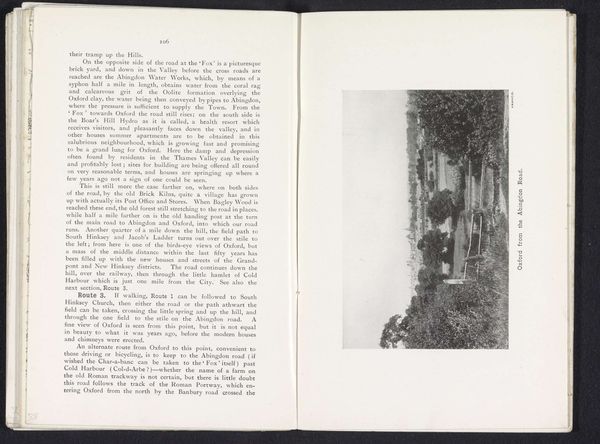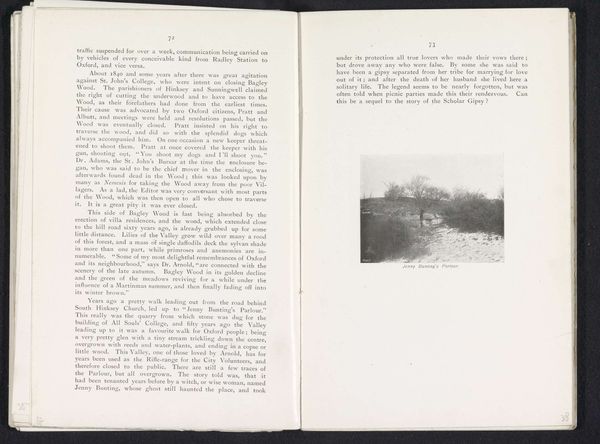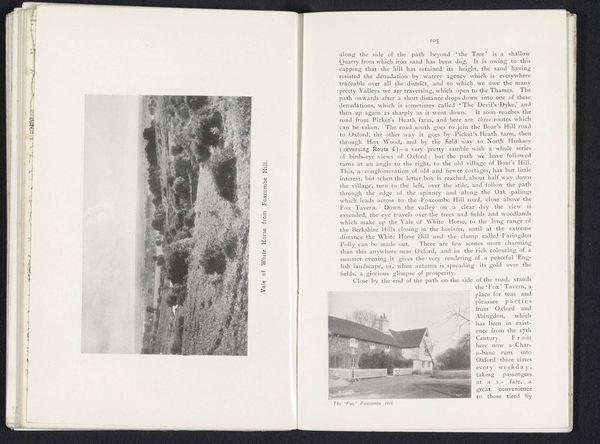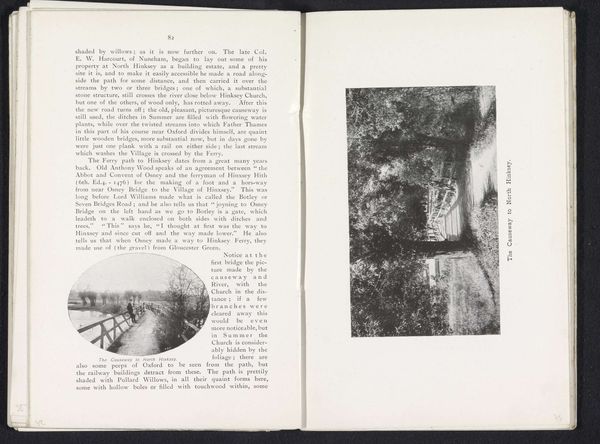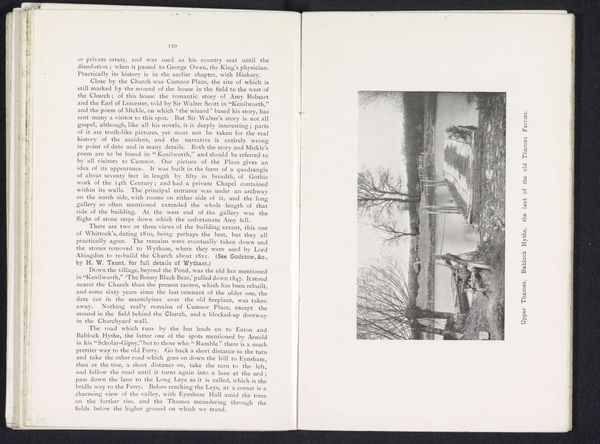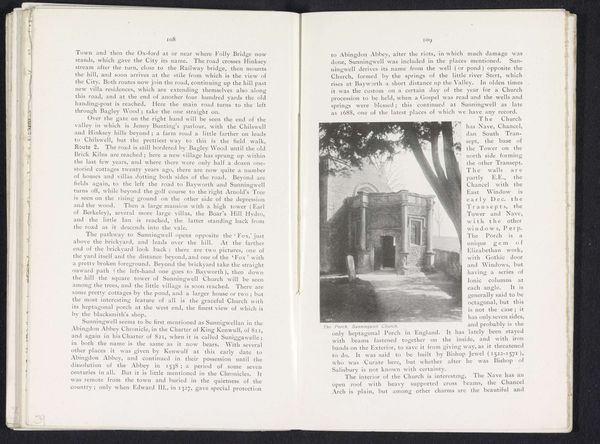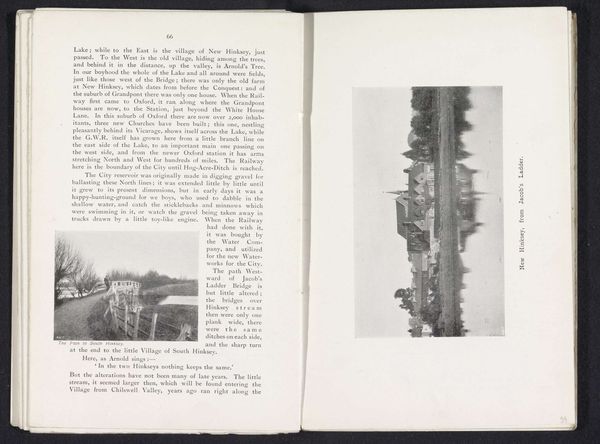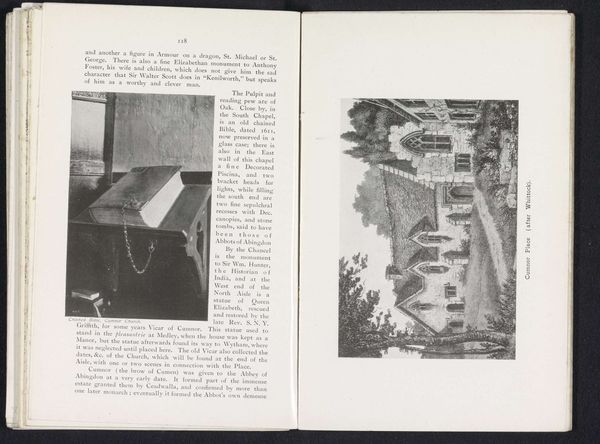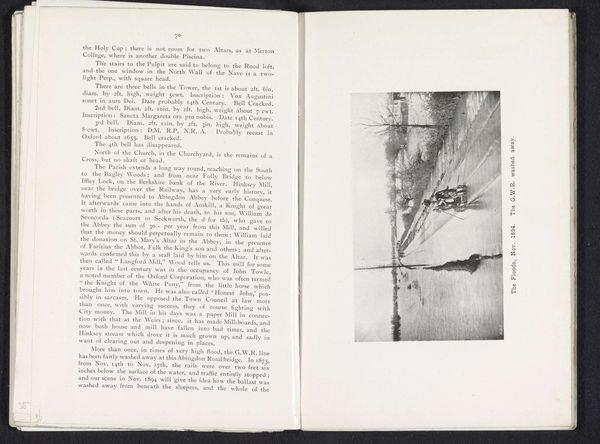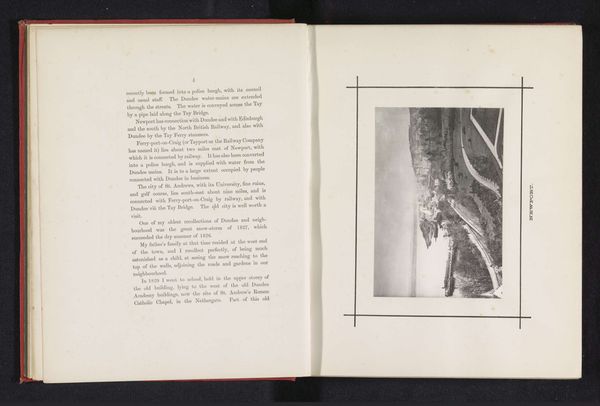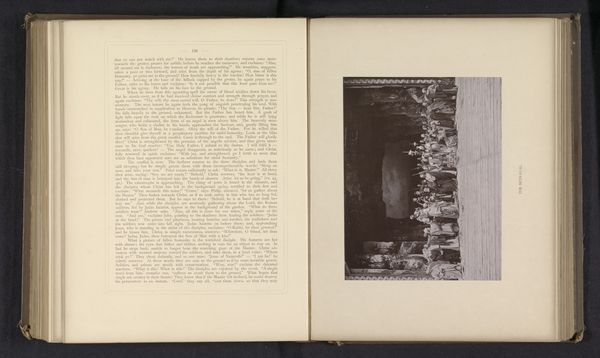
print, photography
#
medieval
# print
#
landscape
#
photography
#
building
Dimensions: height 78 mm, width 132 mm
Copyright: Rijks Museum: Open Domain
Curator: Editor: So here we have a photograph, titled "Cumnor Church from the Road" by Henry W. Taunt, taken before 1912. The composition is rather striking; a stark, almost austere view of this medieval church. What strikes you first about it? Curator: I see the image as a record of a specific place, certainly, but it is equally about the labor involved in creating it. Consider the glass plates, the chemicals, the printing process... Taunt's choice to document vernacular architecture speaks to a burgeoning interest in cataloging a landscape undergoing immense change. How does that inform your view? Editor: I guess I was primarily responding to what's depicted, but you're right. There's something really interesting about the layers of production – from the quarrying of stone for the church itself to the photographic materials used to capture it. What kind of societal shift allowed Taunt to even make such a photograph? Curator: Precisely. We’re moving into an era of mass production and consumption. Photography itself becomes a commodity, reproducing images and disseminating them widely. And, of course, there is the role of colonialism in this. Do you think the wealth extracted allowed Taunt to then produce such art? Editor: That's an angle I hadn’t fully considered, linking even a seemingly quiet photograph like this to broader global economic forces. Thanks to you, I'm realizing it is connected with these important changes that can allow photographs like that. Curator: Thinking about the material conditions opens up richer readings, don't you agree? These historical, economic realities aren't separate, but fundamentally shape the artistic act. We see how economic factors relate to material consumption, but also artistic and visual culture. Editor: Absolutely. I will start using a much wider lens when viewing artworks, as opposed to focusing purely on form and the beauty in the subject. It definitely shows that material can open one's eyes to deeper analysis and interpretations.
Comments
No comments
Be the first to comment and join the conversation on the ultimate creative platform.
